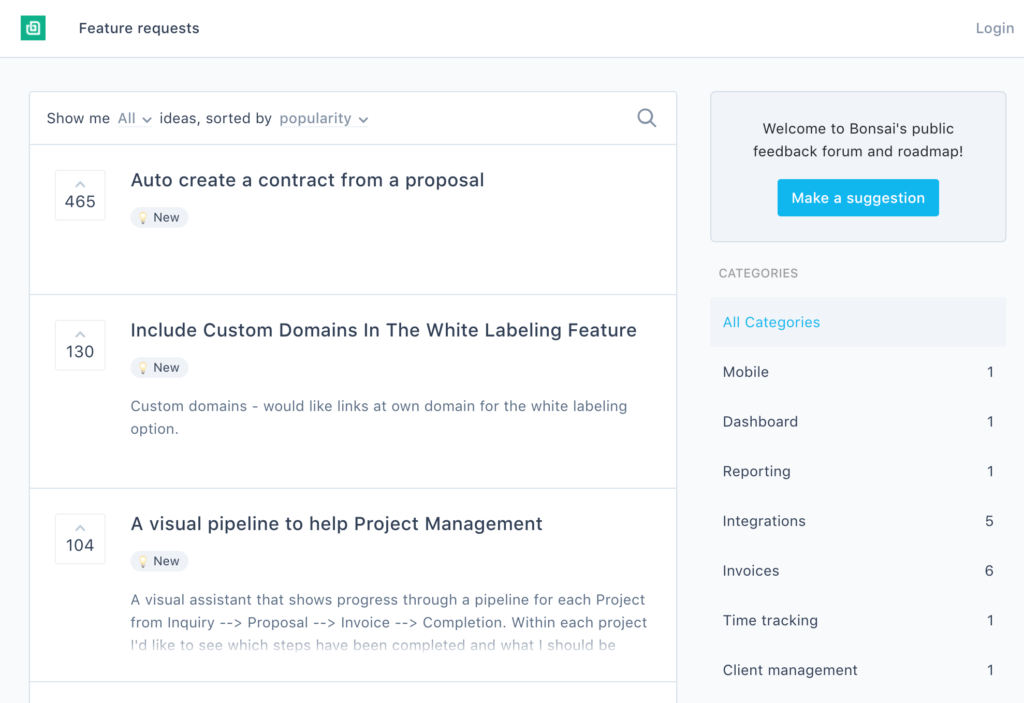
Let’s address the elephant in the room: It’s not easy being a leadership executive.
I’ve faced that first hand while leading multiple marketing teams in the past. During my sabbatical, I reflected on some key learnings during my leadership stints and decided to share the top learnings that I wish someone would’ve told me at the start of my career as a leader.
A majority of these learnings apply to anyone in a high-performance role. If you’re feeling overwhelmed, out of ideas, or feeling directionless, I hope these lessons give you some direction and motivation.
Strategy
You’re a portfolio manager / investment fund manager
That’s the #1 thing you need to remember. You’re judged on the performance of your portfolio – what’s the monthly growth rate, economics, annual growth rate, profitability, what’s the risk score of your portfolio, CAC, your CAC:LTV ratio. You should know these metrics like the back of your hand.
When I first started working with my marketing mentor, the first thing he asked me was what’s in your portfolio, how is it performing, where are you struggling, what’s your CAC:LTV ratio over the last 3 years, etc. Subsequently, during my 1:1s with my CEOs, my portfolio strategy, distribution, spend and ROI is constantly something that’s discussed. I’d keep getting questions like “how are we beating the trendline with the additional investment”.
Your job is to manage this portfolio and budget based on the growth goals of the company.
Don’t hesitate to get a coach/mentor
One of the great things about working in marketing is that a lot of the playbook is already written, we just need some help knowing which bits to focus on and when. That’s why a mentor/coach who’s been-there-done-that is well worth the investment. A couple of things to remember:
- Get a coach that’s relevant to your industry and is probably just a couple of years ahead of you in your career. That way the lessons will be more relatable and relevant.
- Document your conversations somewhere so you can track your learnings and progress. I use a Notion template and you can buy it here.
- Come into your call with a coach with one problem than multiple problems. To find a solution or direction, you need to discuss the problem at length and tackle it from multiple angles.
- If you’re not sure how to get started with a mentor, find a person you admire on LinkedIn, share your problem and ask to get on a call and offer to pay for those calls. That’s the best way to find a mentor (especially when you’re working remotely).
Be inquisitive and always keep getting people on the phone (to uncover insights)
Here’s a short podcast episode where I shared why you should talk to people, how to generate breakthrough insights through these calls, and the process I follow with these calls.
Productivity
Say no to things
Oh my god, such a big one. You really need to prepare yourself for this. You’ll be constantly bombarded with requests and ideas from everyone across the team, especially from the founders. Some of them will be urgent requests, some will be long-term projects, some will be feedback about a current project you’re working on.
It’s easy to get overwhelmed. That’s why you need to pause and think high level at all times. Collect as much information from everybody as possible but process what makes most sense for the marketing vision.
It’s similar to a product feature requests form. You constantly get a lot of feedback from users, but if you were to act on every piece of feedback, you’ll end up building a wonky product and you’ll never have time for the important vision items to grow your product. That’s why you take all the feedback, process it, see if it fits the vision, and then decide which requests to work on and which one to put in the icebox.
That’s what you need to do in marketing as well. I really wish there was a marketing requests board product as well that could help in collecting all ideas and then processing what makes sense and what doesn’t.

Schedule your work in advance
There are two ways you can work:
- Work on things on an ad-hoc basis on a week by week basis
- Plan your work for the year, quarter, month and weeks and work on them sequentially.
In a marketing leadership position, it goes without saying you need to go with option #2. Plan your work in advance. It’ll allow you to make progress on the big rocks that have an impact on your portfolio. Otherwise, you’ll just be fighting fires all the time and that’ll be your job. If done over a long period of time, that’s stressful and it WILL burn you out.
This might seem like an obvious piece of advice and yet I see myself fall into this trap all-the-time. Why?
Because it’s hard to predict or plan what the year’s projects will look like. Usually, most of the marketing planning happens in December for the coming year. The maximum I can plan ahead is 6 months, but usually, it’s difficult to see beyond 6 months in a startup as things change so rapidly and everything is very dynamic. So we start the year with a 6-month plan and by the time we’ve hit month 6, there’s no plan for the next 6 months and we’re back to fire fighting mode.
People have different variations of it. Sometimes quarterly plans just don’t seem useful because half of the work in the quarter is the work that comes ad hoc. Sometimes it just seems like an appealing the CEO thing. Sometimes, we’ve taken too much work in a quarter and it spills over to the next quarter and plans start falling out of place.
The solution is to define broad goals for the year. These goals should be broad enough to know that this is probably a good indicator of our theme for the year in marketing, but specific enough to be tracked improvements on.
Here are some examples:
- SEO team needs to increase capacity, such that we can work on 2+ clusters at once
- Affiliates needs to become a substantial channel, growing sign ups 10%+ per month.
Eat that frog
Instead of a task list, switch to a daily priorities list with urgent & important items only. Completing these items may be more difficult, but getting them off your plate early is infinitely more satisfying.
In the morning, I review my to-do list and select one “frog of the day” that is especially important. Then I put on some focus music (BrainFM is worth the subscription) while tackling this task—this helps me focus quickly so that by noon, I’m already in a groove with the most important task of the day completed!
By completing these “frogs” every week, I ensure progress on what matters while avoiding distraction.
Management
A+ talent brings in more A+ talent
You really need to have a high bar of quality for your first set of team members. If they’re above a certain bar of quality, they’ll attract similar talent for your other positions as well.
I made a great hire to take over our SEO and I was pretty happy to see the results from working with his hire. When we started hiring for more specialist roles with his SEO team, I noticed the bar of quality of candidates was very high. We wanted to find people who’d fit in our team and our standards and as a result, made some great hires.
We eventually built an enviable team that we’re all grateful to be part of and we’re all learning so much from each other. When I started out building our team at Bonsai, our goal was to bring in people in our marketing team that we could learn from.
Have a culture of open and direct feedback early on
We have a philosophy in place. When you’re doing your feedback sessions or bi-annual review with your teammates, no feedback should ever come across as a surprise. It should be communicated regularly and the person should be fully aware of the feedback they’ll probably receive in their feedback session.
Another important thing to keep in mind is that there should be a culture of open and direct feedback from both sides. If only one person is giving feedback and not asking for it, it’ll be hard to build a level of trust between you. Feedback should be received as an improvement tool to help them grow in their career rather than criticism.
Two great books I’d recommend on this are:
- No Rule Rules by Netflix CEO – building that culture of open and transparent feedback
- Radical Candor – building that trust between team mates
…but give lots of shoutouts too ❤️
Only giving negative feedback is not just bad, it’s poisonous in remote teams. You hardly catch up in person so people eventually fall into the trap that if no feedback is being given = you’re performing poorly.
That’s why – be plentiful with shoutouts. Be grateful of your teammates. Let me know their strengths and what strengths will take them a long way in their career.
Ask more than tell (& show more empathy)
Make your teammates feel heard. If something is troubling them (that you don’t necessarily agree with), just ask them “Why do you feel that way? What is it that makes you feel that way?”
“Why?” is a very important word.
Self-care
It’s all about your mindset
This tweet by James Clear sums it up:
Where to focus:
— James Clear (@JamesClear) November 19, 2020
For the beginner, execution.
For the intermediate, strategy.
For the expert, mindset.
I can personally vouch that at the leadership level, this is the order of priorities:
- Mindset
- Execution
- Strategy
With the right mindset, you can go far. But the right mindset takes time and experience to develop. It takes intensive introspection to make it work. It takes observing yourself as a third person to make it work. Focus on that as you get more experience.
Take care of your physical and spiritual health
Mental, emotional & physical well-being are all deeply linked to one another. A lack of physical exercise or nutrition can lead to depressive mood states and a lack of focus.
Stress will always be a part of our job. Find the tools to manage that stress.
This is unfortunately true. Every leadership role is high performance, energy-demanding, and requires a lot out of you. You can’t avoid stress, but you can learn to manage it.
What you can do is find your internal set of tools to manage that stress.
- Reframe your thoughts
- Identify cognitive distortions
- Practice your affirmations before an important meeting
There’s plenty of ways to manage stress. One of the best ways to find those tools is through therapy. Highly recommend it. I’m yet to meet a leadership executive who has taken therapy and not come out stronger.
Thanks for reading 🙂
How do you feel now? Did any lesson resonate with you? If yes, tag me with your thoughts on Twitter (@themadbhandari).
If you’d like to follow my journey, you can listen to my bi-weekly podcast and/or subscribe to my bi-annual newsletter.